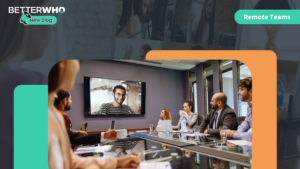In property management, efficiency is not just a goal; it’s a necessity. Facing the daily challenges of managing multiple properties, property managers often struggle with maintenance issues that can quickly spiral out of control. This is where automation tools like Property Meld come into play, revolutionizing the maintenance process by reducing manual errors, streamlining operations, and enhancing overall efficiency.
Set Up Systems to Capture Ideas
Idea Parking Lots: Implement an ‘Idea Parking Lot’ system where team members can store ideas that are not immediately actionable but may be useful later. This can be managed through simple tools like a shared document or dedicated software like Notion or Google Docs. Regularly review these parked ideas in strategic meetings to assess their viability and potential impact.
Regular Review Cycles: Establish a routine, such as quarterly reviews, to go through the ideal parking lot. Assess which ideas are feasible, which need more development, and which should be implemented. This not only keeps the idea flow managed but also makes sure no good idea is overlooked due to timing or resource constraints at the moment of conception.
Nurture a Supportive Corporate Culture
Encourage All Voices: Make it a priority to listen to all team members, regardless of their role or seniority. Each team member should feel valued and heard, fostering a sense of ownership and commitment to the company’s success. Utilize platforms like Slack or Microsoft Teams to create channels specifically for idea sharing and feedback.
Feedback Loops: Develop feedback mechanisms that allow team members to comment on ongoing processes and changes. This could be through regular team meetings, anonymous surveys, or open forums. Feedback is crucial for iterative improvement and helps in refining ideas and processes continuously.
Implement Change Effectively
Clear Communication: Whenever a new process or innovation is adopted, communicate clearly about its purpose, the expected outcomes, and the steps involved. Clear communication prevents misunderstandings and aligns all team members with the organization’s goals.
Training and Resources: Provide necessary training and resources to help team members adapt to new tools or processes. Effective training ensures that innovations are implemented successfully and can yield the intended benefits without unnecessary frustration or resistance.
Recognize and Reward: Acknowledge and reward contributions to innovation and improvements. Recognition can be as simple as mentioning a team member’s idea in a team meeting or as formal as financial bonuses or awards for successful implementations.
Fostering Team Buy-In
Visionary and Integrator Roles: Clearly define and utilize the roles of Visionaries and Integrators within your team. Visionaries should focus on big-picture thinking and new ideas, while Integrators should manage the details and execution. This balance ensures that innovations are both imaginative and grounded in practicality.
Inclusive Decision-Making: Involve key team members in decision-making processes. This collaborative approach helps ensure that all perspectives are considered and increases overall buy-in for new initiatives. Utilize structured meetings to discuss potential changes and encourage open dialogue about concerns and suggestions.
Leadership Strategies for Effective Change Management
Lead by Example: Demonstrate your commitment to continuous improvement by actively participating in the creativity and implementation processes. Your involvement shows that innovation is a priority at all levels of the organization.
Communicate Vision and Value: Consistently communicate the vision behind changes and how they contribute to the organization’s goals. Help team members see the value of their contributions to these larger objectives.
Manage Resistance with Empathy: Understand and address resistance to change. Listen to concerns and provide reassurance through information and support. This empathetic approach helps smooth transitions and reinforces a supportive company culture.
The Role of Property Meld in Automation
Property Meld has been specifically designed to address the unique needs of the property management industry. By leveraging Property Meld, property managers can expect:
Integrated Communication Tools: Streamline communication between tenants, maintenance staff, and management, reducing delays and improving service quality.
Performance Tracking: Monitor key performance indicators (KPIs) to identify areas for improvement and ensure maintenance tasks are completed efficiently and effectively.
By establishing these practices, property management businesses can cultivate a culture where continuous improvement and innovation are part of daily operations. Such a culture not only drives the company forward but also makes team members feel integral to the organization’s success, leading to better performance and job satisfaction.




